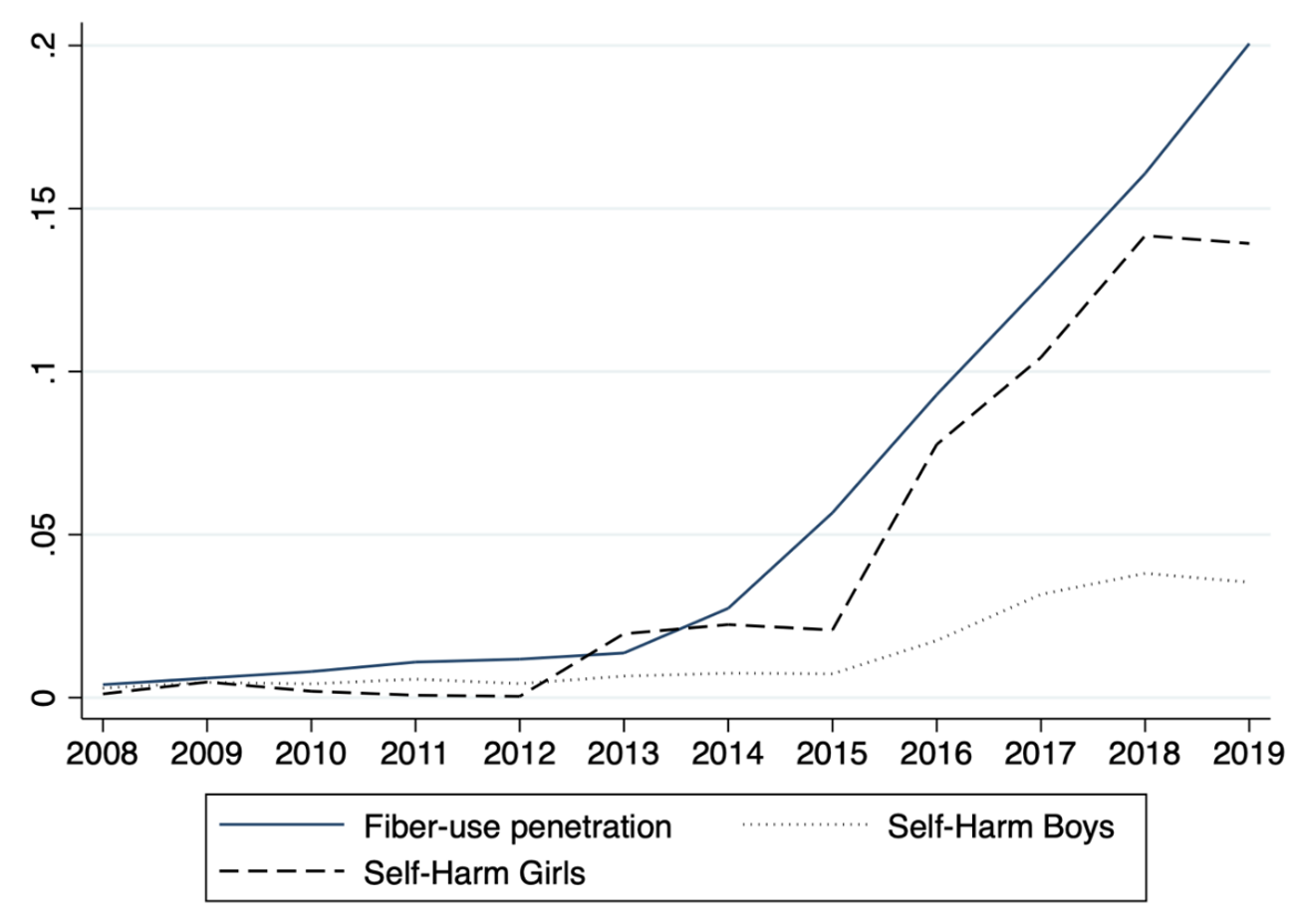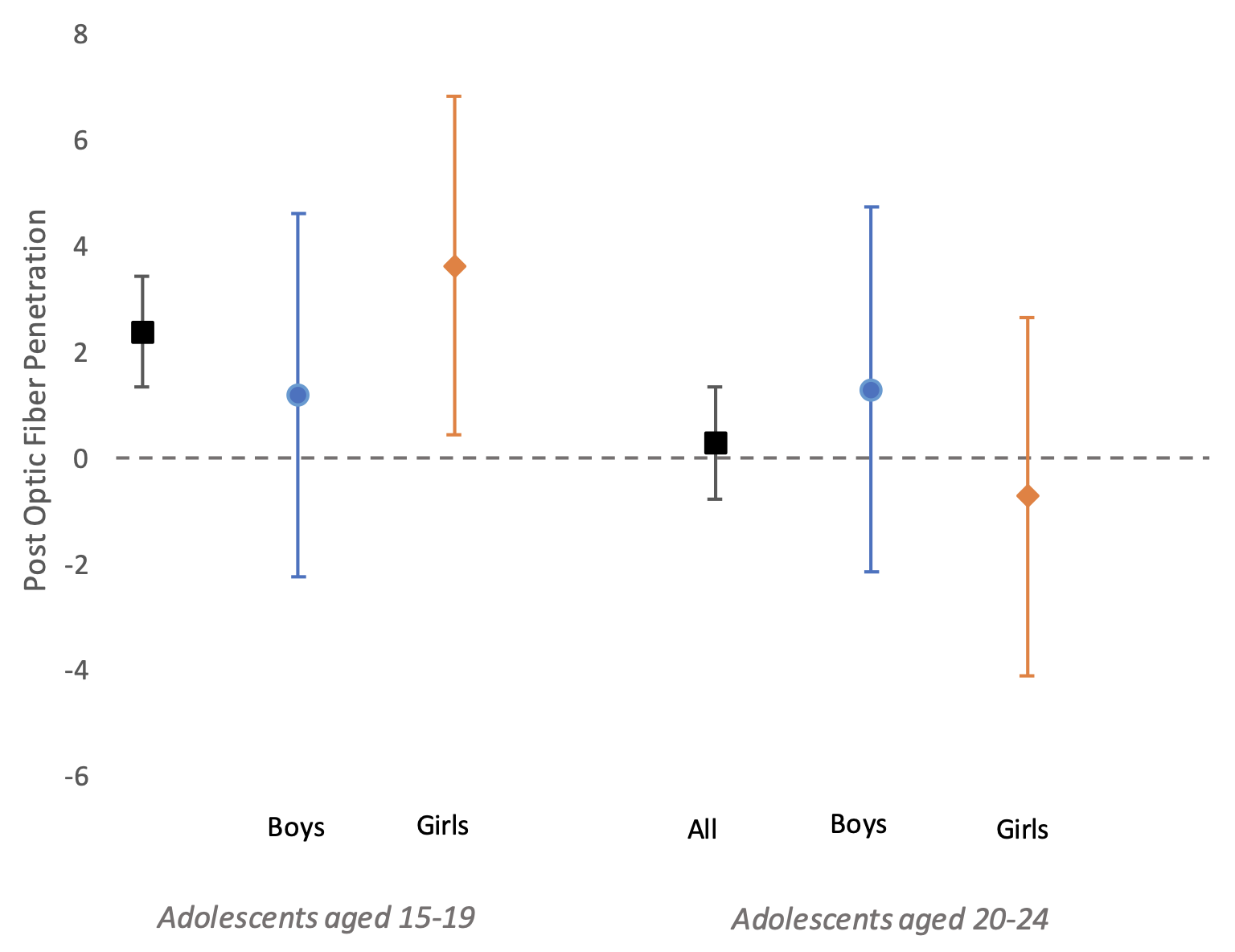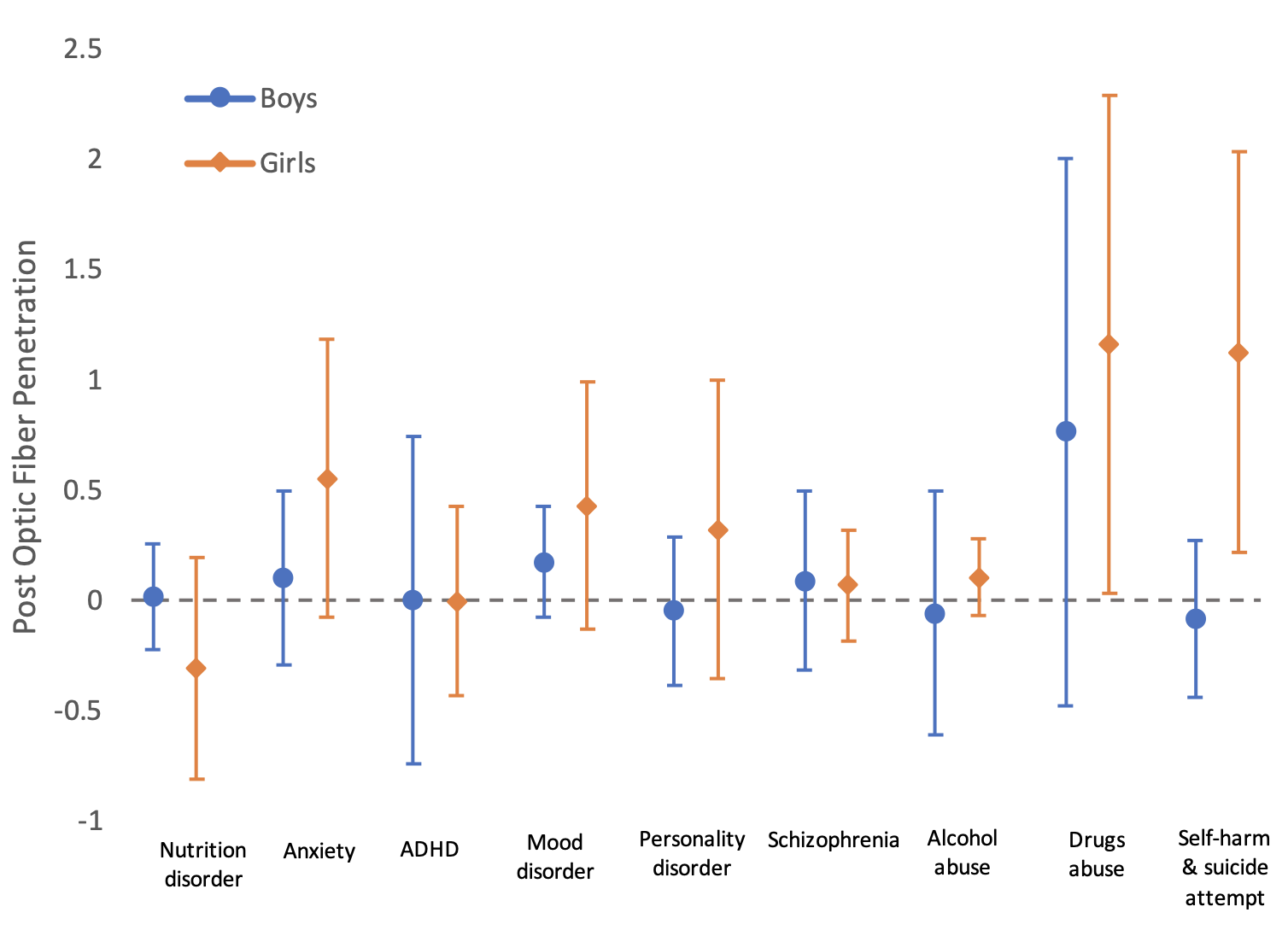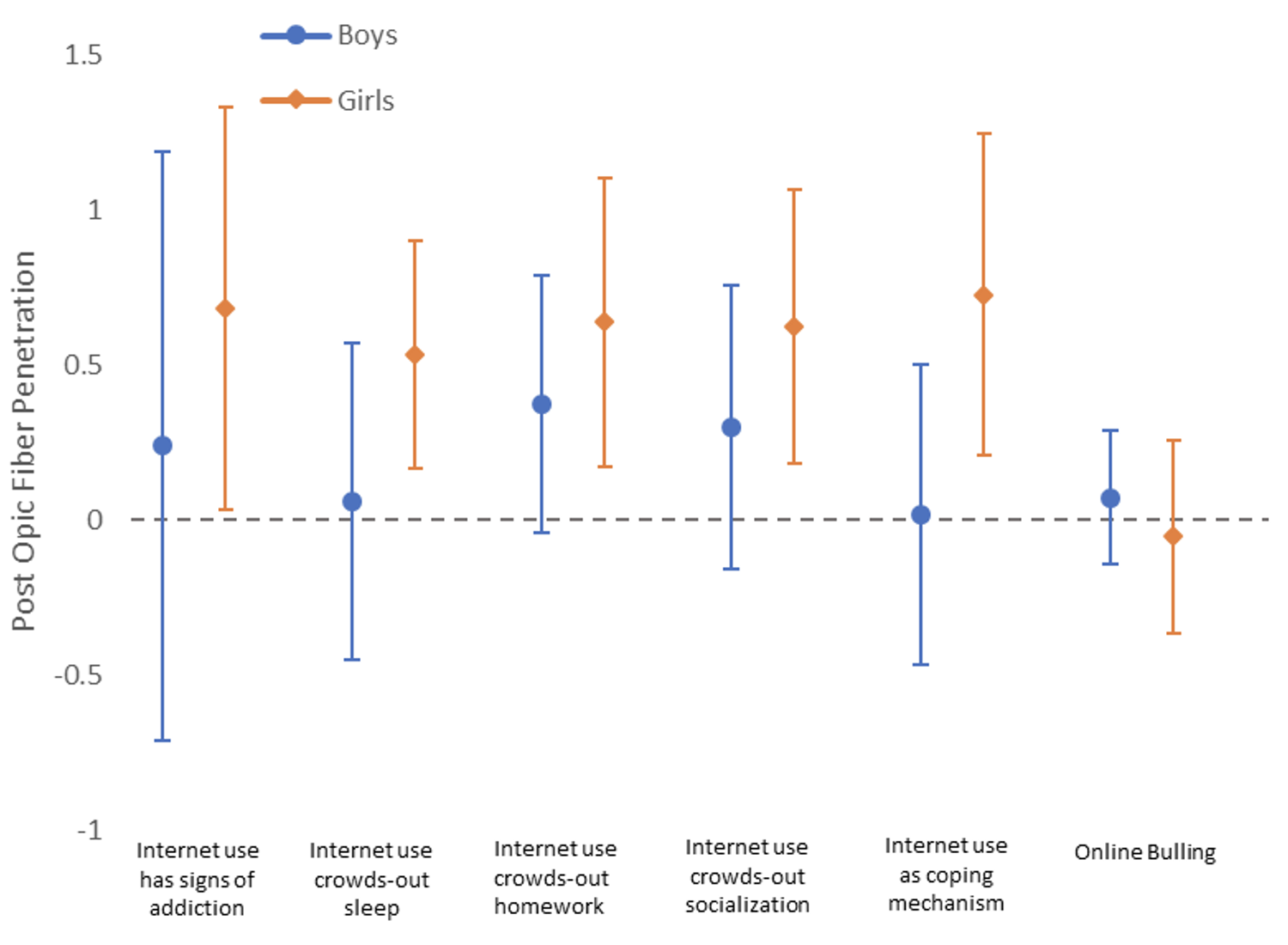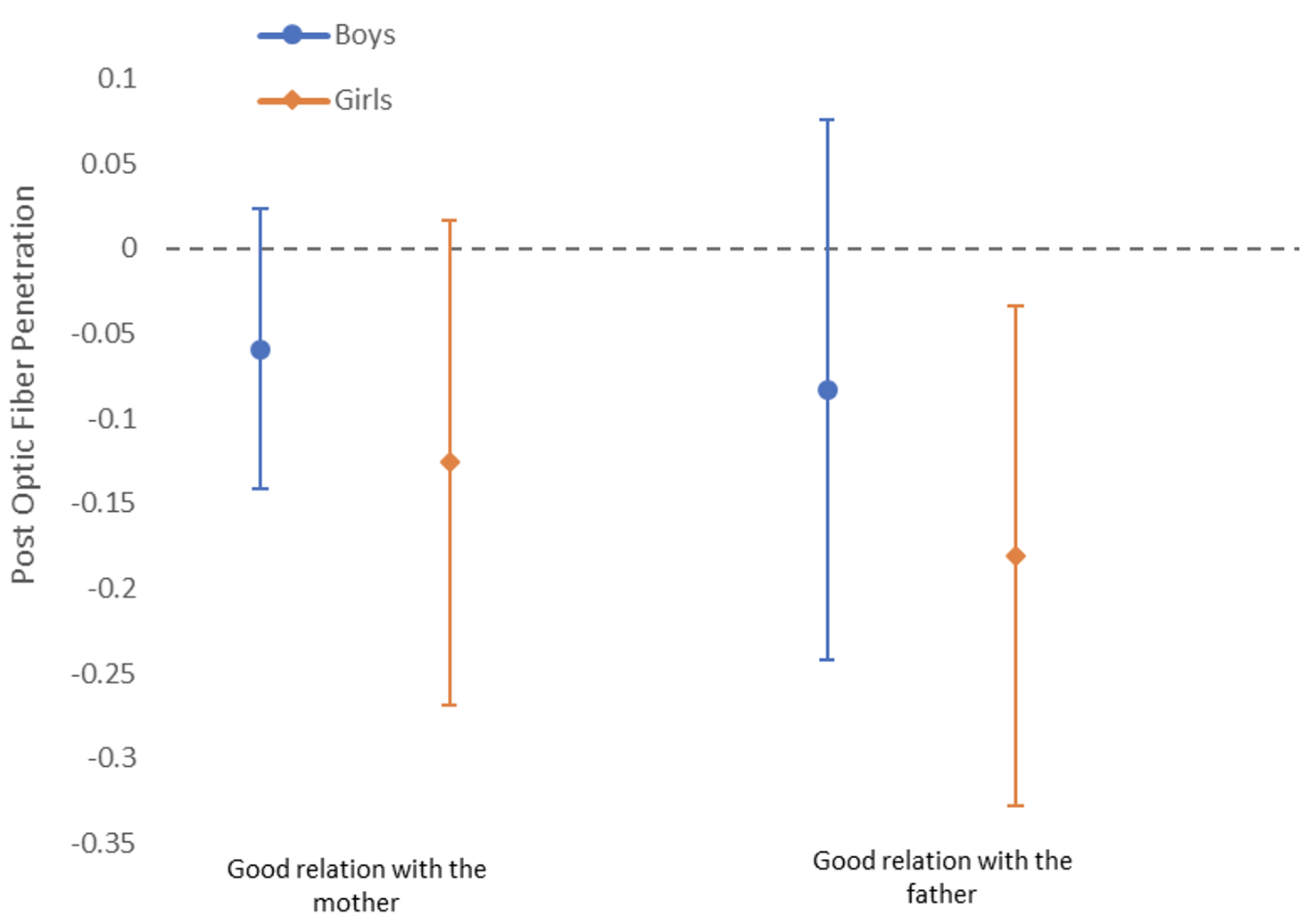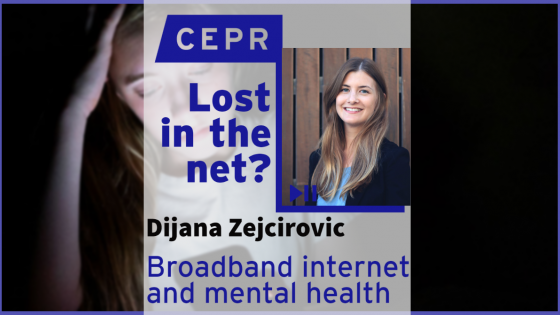Rates of teenage suicide attempts and suicidal thoughts have grown significantly during the past ten years in several countries. For instance, from 2008 to 2015, hospital admissions for suicide attempts and suicide ideation in adolescents doubled in the US, with increases of up to 500% in the case of youngest girls (CDCP 2020). In the UK, between 2005 and 2019, episodes of admission completed with a primary diagnosis of self-harm and self-intoxication increased by 42% for boys ages 11–17 and 60% for girls the same age, with most of the increase also occurring after 2010.
Similar patterns have been observed in other countries, including Spain, Italy, and Canada. As a result, many have come to the conclusion that we are in the midst of an adolescent mental health crisis (Sohn 2022).
It seems unlikely that these trends have been caused by increased awareness of mental health conditions or greater comfort with seeking help, given that life-threatening cases, such as self-harm and attempted suicide, have also increased. A usual suspect in public debates is social media and teens’ exposure to other content via the internet, as increases in depression among adolescents have been concurrent with increases in digital media use. Based on this hypothesis, Utah became the first state to pass a law prohibiting social media services from allowing users under 18 to have accounts without the explicit consent of a parent or guardian. However, causal evidence is extremely scarce in this domain. Focusing on earlier periods of internet access and on older individuals, previous work has shown a negative impact of exposure to online media on mental health. Bragieri et al. (2022) find that the gradual introduction of Facebook in US universities worsened the mental health of college students due to Facebook fostering unfavourable social comparisons. Along the same line, Donati et al. (2022), find a negative effect access to ADSL on youth mental health in Italy between 2001 and 2013. And although these studies are relevant to the analysis of the effects of the Internet on mental health, they do not focus on the population group or the period of time in which there has been a greater increase in mental health problems, that is, teenagers since 2010. The period after 2010 saw an explosion of new media and content platforms very popular among teenagers (Instagram, Tik-Tok, Netflix, HBO, etc.), an expansion that was made possible by the deployment of fibre infrastructure.
In a recent study (Arenas-Arroyo et al. 2022), we analyse if and how high-speed internet expansion has impacted adolescents’ mental health problems in Spain. Because we focus on the period when teens were exposed to new and very popular media and content platforms, our study offers evidence of the impact of online media on the mental health of adolescents. Figure 1 displays the incidence of self-harm and suicide attempt among boys and girls aged 15 to 19 years (per 100 inhabitants) against fibre penetration (number of fibre lines in use per inhabitant) in Spain from 2008 to 2019. The correlations between fibre penetration and self-harm and suicide attempt are very strong in the case of girls but not for boys. But the patterns shown in Figure 1 are only illustrative or suggestive of a relationship between fibre penetration and mental health problems among adolescents.
Figure 1 Fibre penetration and hospital cases of self-harm and suicide attempt among boys and girls aged 15 to 19 years, 2007–2019
Notes: Elaborated by the authors based on administrative data from Spanish public and private hospital discharge diagnoses of behavioural and mental health cases and fibre use data from the National Commission of Markets and Competition.
To find a causal relationship, we exploit the plausibly exogenous variation in the optic fibre rollout across Spanish provinces between 2007 and 2019 and explore whether access to high-speed internet (HSI) caused some of the observed increase in hospital discharge diagnoses of behavioural and mental health cases (BMH) of adolescents aged 15 to 19 years.
Spain is a leader in the implementation of HSI through fibre, with more than 80% of the population covered by fibre networks in 2019. But fibre penetration did not increase homogeneously throughout the territory. Optic fibre rollout was the result of a strategic decision by the industry leader, Telefónica, whose presence in the different territories had more to do with historical and political factors than with socioeconomic or demographic ones. We leverage this plausibly exogenous variation in fibre infrastructure to instrument access to HSI. Since ADSL preceded fibre, our study can be understood as an analysis of the marginal effects of an increase in Internet quality and speed.
Figure 2 presents the casual Instrumental Variables estimates of the effect of fibre penetration on adolescent mental health. We find that fibre penetration significantly increases BMH cases in adolescents aged 15 to 19. One standard deviation increase in fibre penetration increases cases of BMH by 13.3%. Girls drive this effect entirely. When we analyse older individuals (20 to 24 years old), we do not find statistically significant results.
Figure 2 The effect of fibre penetration on the mental health of adolescents
Notes: The dependent variable is defined as hospital cases of BMH per one hundred inhabitants. Confidence intervals at 95% level. Behaviour & BMH cases in chapter 5 of the International Classification of Diseases (ICD-10). Self-harm and suicide attempt do not belong to chapter 5 of ICD-10 and it’s added to the calculation of BMH. The SD of fibre penetration is 0.067 for the entire sample period.
When we look at BMH cases by condition type, we find that fibre penetration increases the incidence of anxiety, mood disorders (these two are only significant at a 10% level), drug abuse, and self-harm and suicide attempts, with most effects again due to girls. We document an exceptionally large effect on cases of self-harm and suicide attempts among girls aged 15 to 19 years (+112.3%) but no significant effect for boys.
Figure 3 The effect of fibre penetration on the mental health of adolescents aged 15 to 19 years by type of medical condition
One concern is that these results are simply due to heightened awareness of mental health problems among adolescents. But contrary to this hypothesis, we find that HSI is a contributing factor to a significant increase in deaths related to suicide or self-harm among adolescents. The effects are, again, more prominent among girls.
Which mechanisms account for the detrimental impact of HSI on teen’s mental health?
According to the medical literature, there are at least three possible channels. First, adolescents are unable to cope and process the huge influx of information and stimulus maturely that they receive from online media, leading to feelings of confusion, emptiness, low self-worth, anxiety, or even depression. This can range from the spread of information about self-harm and suicide techniques (Lewis et al. 2011) to platforms that foster unhealthy amounts of social comparison (Braghieri et al. 2022). Another possible mechanism is that the anonymity that characterises Internet use can lead to pathological, compulsive or even self-harmful uses such as ‘digital self-harm’ (Patchin et al. 2023) , FOMO (‘fear of missing out’) (Alt and Nissim 2018), the ‘online disinhibition effect’ (Lapidot and Barak 2012), and addiction. Finally, and partially related to the addictive component of the Internet, another part of the literature argues that the Internet may indirectly affect happiness by crowding out healthier activities, like in-person interactions, exercise, or sleep (Twenge et al. 2019).
It is important to note that these mechanisms are not mutually exclusive. For example, the emptiness and confusion that the avalanche of stimuli from the Internet can generate can lead to compulsive or even addictive use of the Internet precisely as an attempt to alleviate these feelings, causing the individual to enter a vicious circle. Also, the displacement of healthier uses of time can lead to the progressive isolation of the person and increasingly addictive use of the Internet. Indeed, one would expect to find evidence that a combination of these mechanisms occurs.
To explore this, we use data from a biannual cross-sectional survey of adolescents between 14 and 18 years of age (ESTUDES), which seeks to identify the habits of adolescents in matters such as drug use, internet use, and relationships with friends and family. We find support for the crowding-out hypothesis, an increased probability of using the Internet addictively and as a coping mechanism when feeling ‘low’. As Figure 4 shows, access to HSI increases the addictive use of the Internet (9% of a standard deviation) and significantly decreases time devoted to sleep, homework, and socialising with family and friends (21%, 30%, and 44% of a standard deviation, respectively). Consistent with our previous results, girls drive all these effects. The expansion of fibre also increases the proportion of girls that respond that they rely on the Internet as a coping mechanism to deal with negative feelings or when they feel ‘low’. Perhaps a little surprisingly, we do not find evidence of increased online bullying.
Figure 4 The effect of fibre penetration on Internet use of adolescents aged 14 to 18
Notes: The dependent variable in each case is a dummy variable indicating the reason for using the Internet or the impact on alternative uses of time.
Finally, we explore evidence to confirm the results of previous research in the fields of medicine and psychology finding a negative association between pathological Internet use and the quality of the parent-adolescent relationship (Özaslan et al. 2022). To analyse this question, we exploit the information from two questions in the cross-sectional survey that directly asks teens about their relationship with their parents. We find that fibre expansion has a negative effect on the quality of the relationship between parents and girls, but no effect is found for boys. Furthermore, we find that the impact of HSI on the parent-girl relationship is more negative when that relationship suffers from prior conflict.
Figure 5 The effect of fibre penetration on the relationship of adolescents aged 14 to 18 years with their parents
Adolescence is a critical and potentially vulnerable time for social and emotional development. Prior research has shown that mental health problems during adolescence substantially explain worse education and employment outcomes later in life. Hence, understanding online media’s effects on health at this stage is of vital importance. The evidence presented in this paper calls for policy interventions to mitigate the impact of social media on adolescents’ mental health.
References
Alt, D and M Boniel-Nissim (2018), “Parent–Adolescent Communication and Problematic Internet Use: The Mediating Role of Fear of Missing Out (FoMO)”, Journal of Family Issues 39(13): 3391–3409.
Arenas-Arroyo, E, D Fernandez-Kranz and N Nollenberger (2022), “High Speed Internet and the Widening Gender Gap in Adolescent Mental Health: Evidence from Hospital Records”, IZA DP No. 15728.
Braghieri, L, R Levy, and A Makarin (2022), "Social Media and Mental Health", American Economic Review 112 (11): 3660-93.
CDCP - Centers for Disease Control and Prevention (2020), Youth Risk Behavior Surveillance Data Summary & Trends Report: 2009-2019.
Donati, D, R Durante, F Sobbrio, and D Zejcirovic (2022), “Lost in the Net? Broadband Internet and Youth Mental Health”, IZA DP No. 15202.
Lapidot‐Lefler N and A Barak (2012), “Effects of anonymity, invisibility, and lack of eye contact on toxic online disinhibition”, Comput Human Behav 28: 434–443.
Lewis S P, N L Heath, J M St Denis and R Noble (2011), “The scope of nonsuicidal self‐injury on YouTube”, Pediatrics 127(3): e552–e557.
Özaslan, A, M Yıldırım, E Güney and E İşeri (2022), “Association Between Problematic Internet Use, Quality of Parent-Adolescents Relationship, Conflicts, and Mental Health Problems”, International Journal of Mental Health and Addiction 20: 2503–2519.
Patchin, J W, S Hinduja and R C Meldrum (2023), “Digital self‐harm and suicidality among adolescents”, Child and adolescent mental health.
Sohn, E. (2022), “Tackling the mental-health crisis in young people”, Nature 608(7924): S39-S41.
Twenge J M, B H Spitzberg and W K Campbell (2019), “Less in‐person social interaction with peers among US adolescents in the 21st century and links to loneliness”, J Soc Pers Relat 36: 1892–1913.




